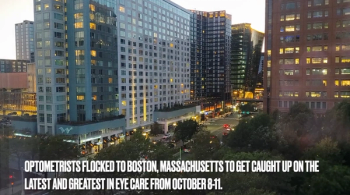
Extended-wear users: higher lens but lower lid bioburden
In a study comparing extended wear and daily wear contact lenses, extended contact lens wear was associated with more inflammatory and infectious complications, says Loretta Szczotka-Flynn, OD, PhD, from Case Western Reserve University, Cleveland, OH, They appeared to have a greater frequency of lens bioburden and decreased frequency of lid bioburden, as compared to daily wear.
Seattle-In a study comparing extended wear and daily wear contact lenses, extended contact lens wear was associated with more inflammatory and infectious complications, says Loretta Szczotka-Flynn, OD, PhD, from Case Western Reserve University, Cleveland, OH, during the annual meeting of the American Academy of Optometry in Seattle. They appeared to have a greater frequency of lens bioburden and decreased frequency of lid bioburden, as compared to daily wear.
The frequency of corneal staining was greater in daily wear.
Researchers looked at two longitudinal cohorts using the same lens type and following similar protocols over 1 year, and contact lenses from both cohorts followed the same microbial culturing and corneal staining assessment and analyses.
Dr. Szczotka-Flynn says that the unadjusted cumulative corneal infiltrative event rates were 26% and 7% in the extended wear and daily wear groups. There was moderate corneal staining (about 18%) in both groups across all visits. “Corneal staining was assessed for type,” she says.
When comparing both groups, the extended wear users showed no substantial lens bioburden at any visit (80% vs 66%, p=0.0036), and fewer daily wear users had repeated episodes of lens bioburden (9% vs 17%, p=0.0228). Conversely, more of the extended wear users showed no substantial lid bioburden at any visit (62% vs 47%, p=0.0020). However, about the same number of individuals in each study arm had repeated episodes of lid bioburden (17% vs 20%, p=0.5263).
The bioburden coupled with a stagnant post lens tear layer with extended wear may lead to the increased risk of contact lens-related corneal infection and inflammation when lenses are not removed nightly, she says.
Newsletter
Want more insights like this? Subscribe to Optometry Times and get clinical pearls and practice tips delivered straight to your inbox.



















































.png)


